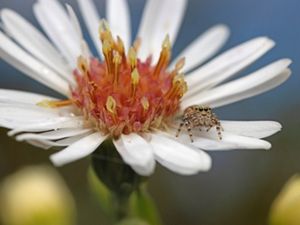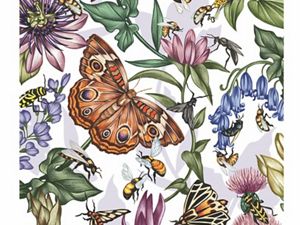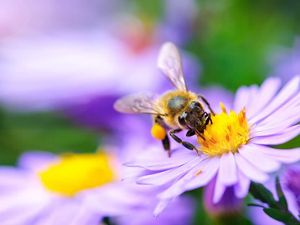
Bumble Bee on Goldenrod A large bumble bee collects pollen from goldenrod. © Danae Wolfe/TNC
Often overlooked and underappreciated, insects play an important role in our ecosystem and contribute to the overall health of our planet. While they may be tiny in size, their impact is immense. From pollinating plants to breaking down organic matter, insects perform vital ecological functions that support biodiversity and maintain a delicate balance in nature. But insect populations are facing significant challenges. Pesticide use, urbanization and habitat loss are contributing to insect declines globally. In fact, scientists estimate that 40% of insect species are in decline.
Fortunately, organizations like The Nature Conservancy are working to protect insects. And there are ways you can help too. Here are eight ways to help insects and other pollinators from your home or community garden.
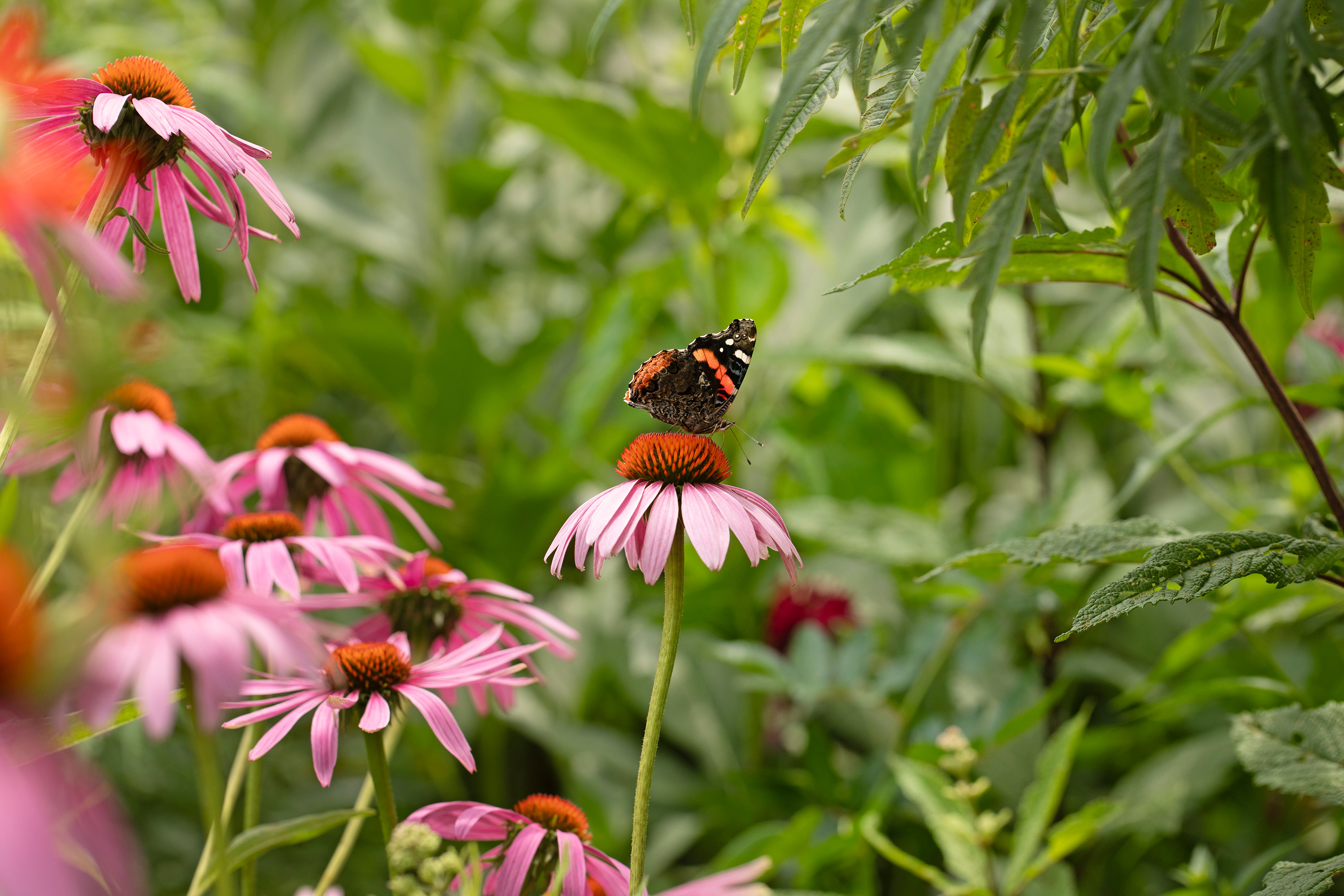
1. Plant Native
Native plants support more insects than non-native plants.
One of the very best things we can do to support insects is plant native plants (those endemic to a specific region) in our landscapes. Including native plants in your garden at home and in your community will not only create healthy habitats and food sources for insects and other wildlife, but it also ensures that you’re creating a resilient garden that can withstand your region’s unique climate, which often means they'll be less resource-intensive to maintain.
Native plants create a foundation for biodiverse communities and are an important food source for specialist pollinators. Even a few potted pollinator plants on an apartment balcony or porch can be enough to attract bees and butterflies. Be mindful of nativars, or native plant cultivars, which are bred for specific traits like color or bloom size, as they don’t always provide the same pollinator value as straight, or ecotype, species. Discover what plants are native to your region and learn more about how to plant a pollinator paradise.
Not sure where to find native plants? As gardening for pollinators has grown in popularity, so too has the incentive for garden retailers to carry native plants. Check with your local plant nurseries or big box garden centers to see what species of native plants they offer. If they aren't already, consider asking them to carry native plants to support local wildlife. If you're still having trouble finding plants, check the Homegrown National Park Native Plant Resource Directory to find a native plant retailer near you.
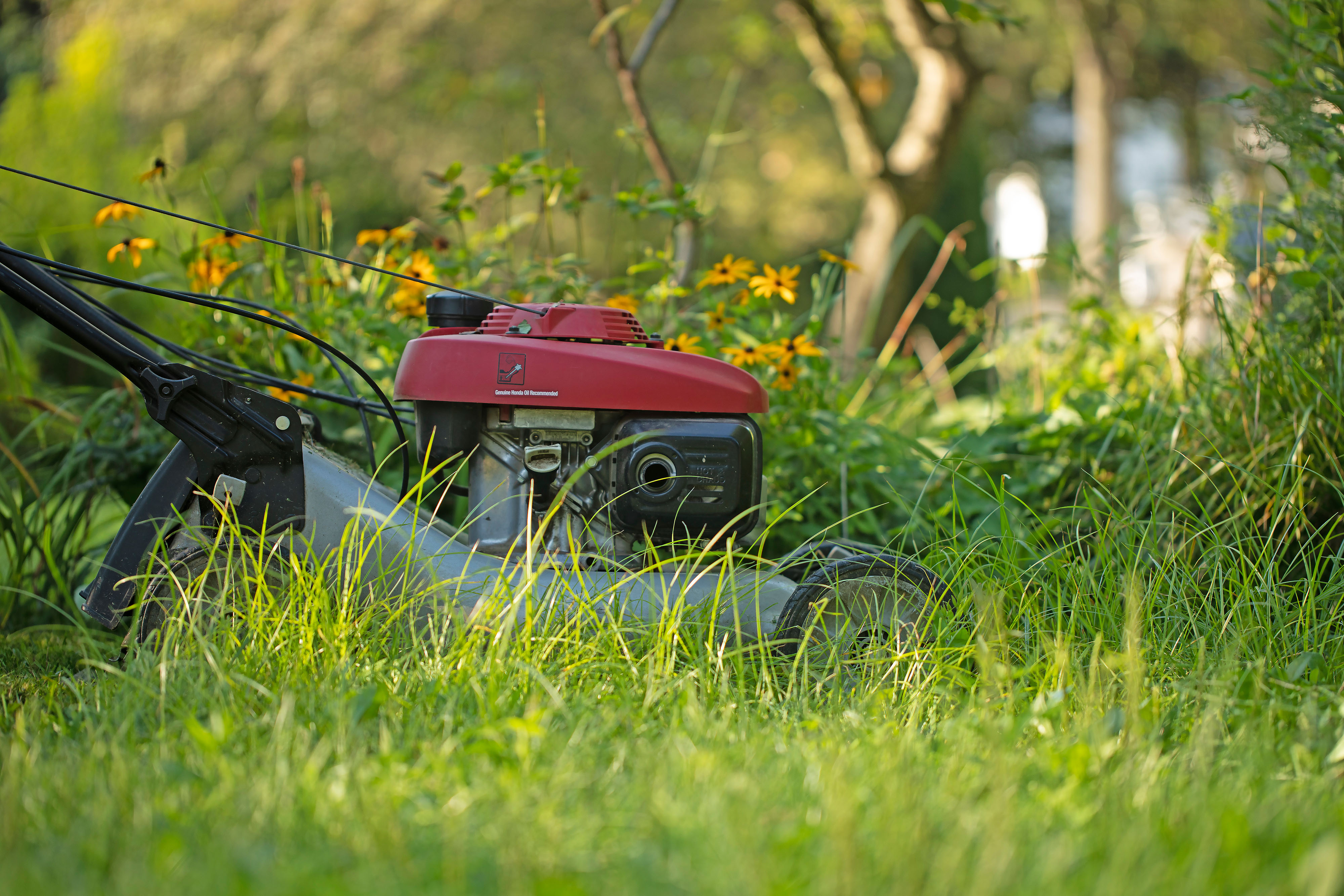
2. Be a Lazy Lawn Mower
Lazy landscaping provides insects with critical habitat and floral resources.
Adopting a lazy lawnmower approach to landscape maintenance can greatly benefit backyard bugs. Infrequent mowing can foster growth of important pollinator plants in the lawn while cutting emissions from lawn care equipment. In fact, studies show that mowing less frequently may increase urban bee diversity by allowing floral resources to bloom.
You might also try incorporating low- or no-mow lawn species into your yard and advocating for similar practices in public community spaces. Fescue mixes can be a great choice by offering shade-tolerance, hardiness and minimal mowing. Lawn alternatives like clover or moss can also be great options, depending on your personal aesthetic and wildlife gardening goals.
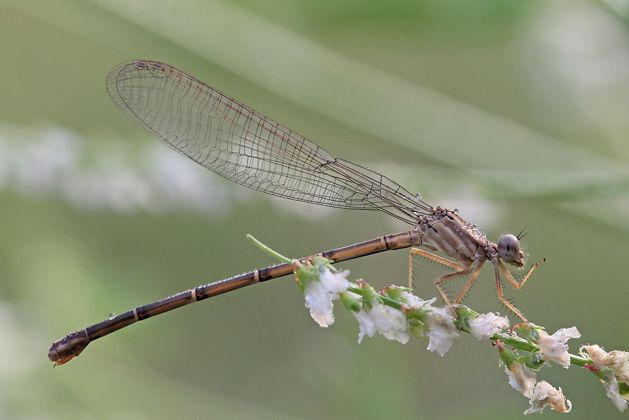
Get Inspired by Nature Near You
Sign up to receive monthly conservation news about your state chapter.

3. Leave Your Leaves
Leaving your leaves creates valuable wildlife habitat and fosters healthy soil ecosystems.
While you’re busy being a lazy lawn mower, also consider being lazy about leaf pick-up. Many insects and spiders, including the beloved luna moth, overwinter in leaf litter. Leaving your leaves not only provides critical habitat for a variety of critters looking for shelter, but it also reduces carbon emissions as two-stroke leaf blowers are one of the heaviest carbon-emitting (and noisiest) lawncare tools we use.
As a bonus, allowing leaves to decompose naturally helps return important nutrients to the earth, creating a healthy soil ecosystem and lessening the need for synthetic fertilizers. If you’re worried about killing grass, simply rake leaves into a corner of the garden and let them decompose naturally there.
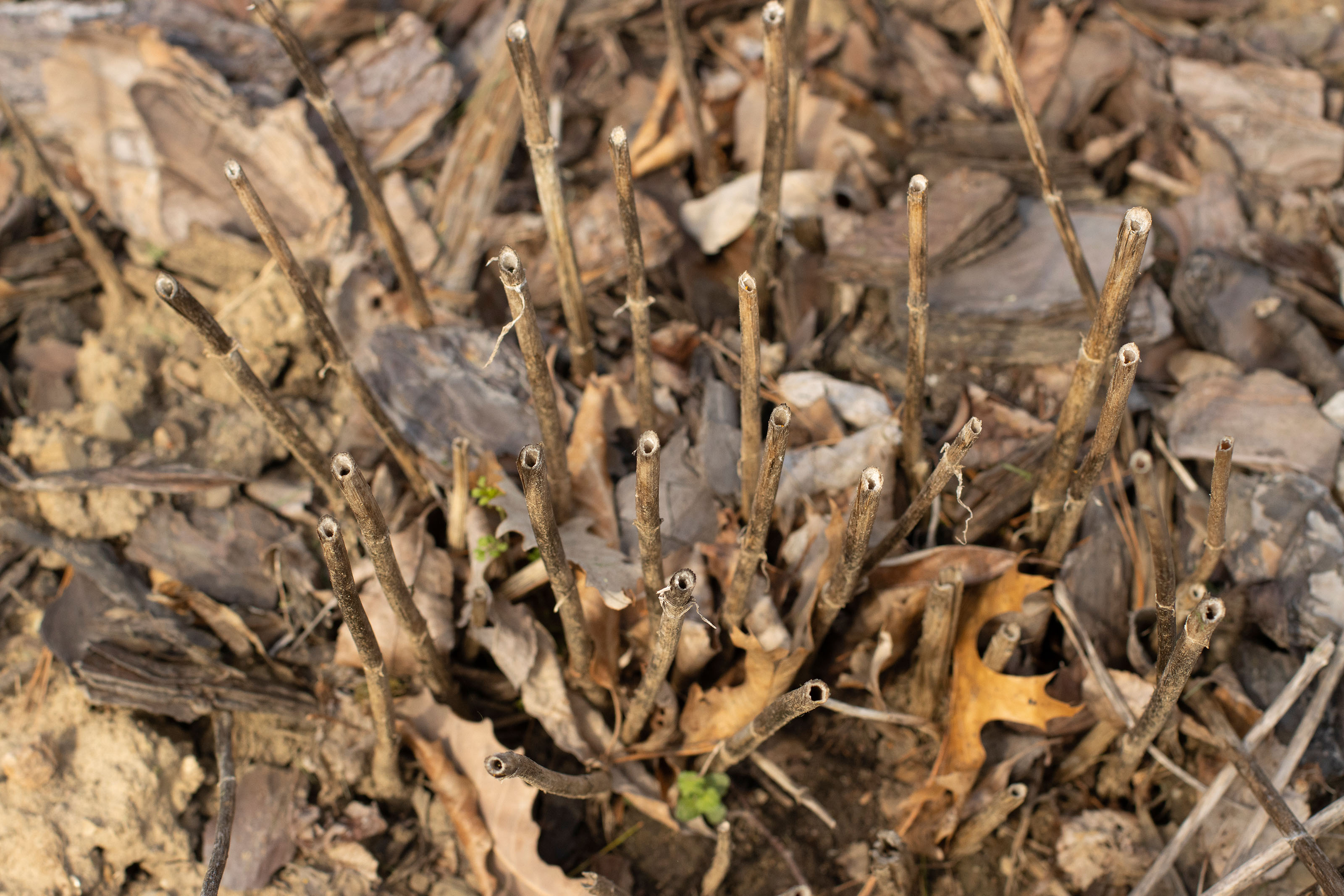
4. Rethink Garden Cleanup
Garden cleanup can be a chore, but leaving plant stems can help bees.
Of the roughly 4,000 bee species in the U.S., around 90% are solitary nesting, constructing nests underground or in logs and plant stems. Leaving stems of plants allows solitary nesting pollinators like leafcutter and mason bees to find suitable habitats for reproduction. After blooming, allow plant stems to remain standing in the garden over winter. Come spring, you can cut stems to varying lengths of 8 to 24 inches. Female bees will contruct nests and lay eggs in stems throughout spring and summer. After hatching, bee larvae will feed on pollen provisions left by their mother and eventually pupate. Pupae overwinter in stems and emerge as adults the following spring.
As a general rule of thumb, you should wait until nightime temperatures have consistently reached 50ºF before clearing away plant stems or leaves from the garden. However, some bees don't begin to emerge until late May, so the longer you can hold off on garden cleanup, the better.
Commercial or homemade bee motels are also great options for supporting bees in the garden, but be sure to use nesting materials that can be replaced or cleaned from one season to the next. Cardboard tubes or trays are ideal as they can be easily cleaned, preventing the spread of disease and pests like pollen mites, which may impact survivability of nesting bees.
Also consider putting that grass seed away. You might be tempted to cover every inch of your landscape with mulch or lawn, but this prevents ground nesting bees from finding the bare earth they need for nesting. Leaving bare spots in infrequently traversed areas of your yard will provide important habitat for many pollinating insects.
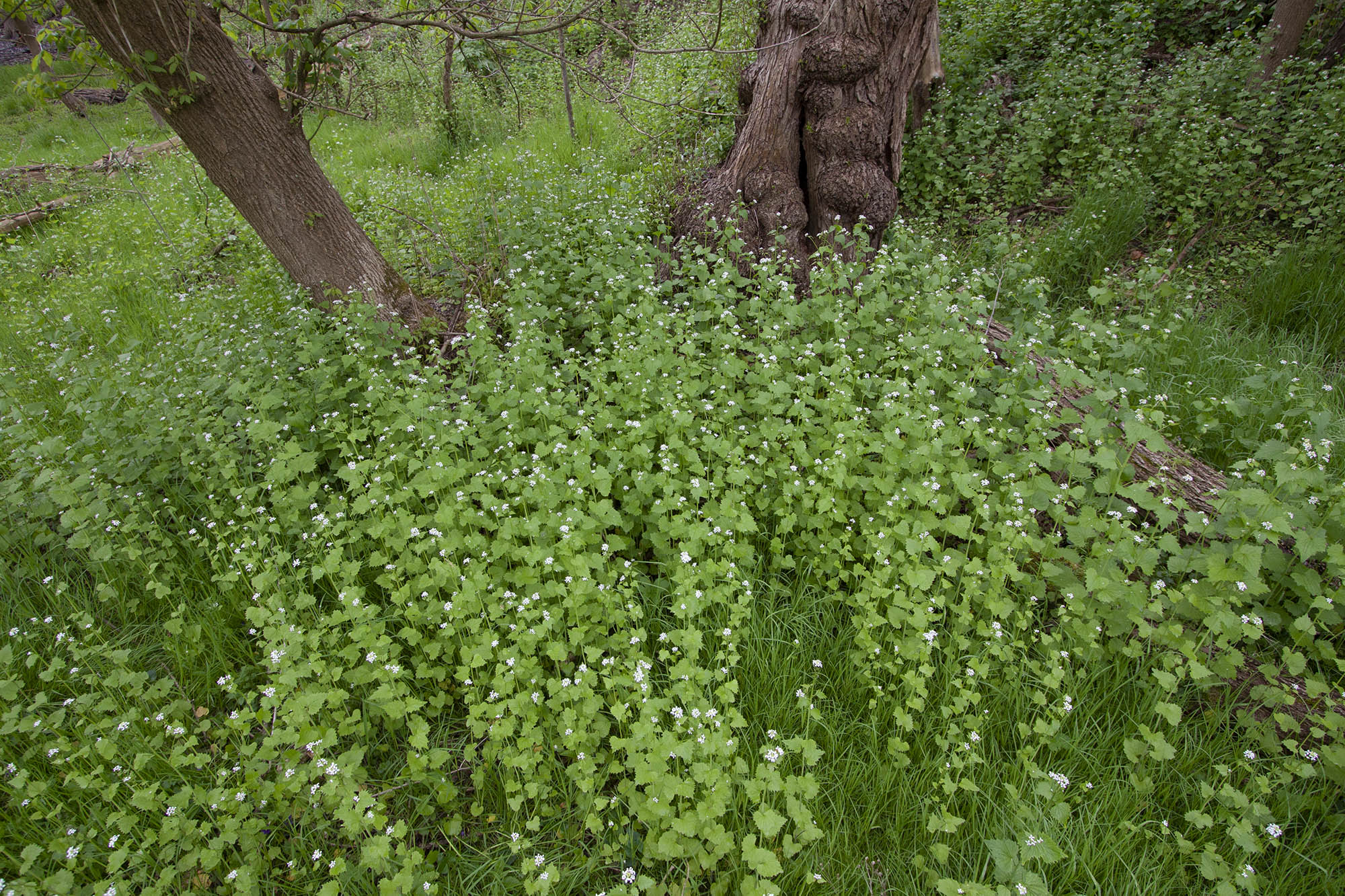
5. Remove Invasive Plants
Invasive plants outcompete native plants, which insects and other wildlife depend on for food and habitat.
Invasive plants are those that are non-native to a given area and cause ecologic or economic damage by outcompeting native flora. While invasive species are regionally specific, some of the most common invasive plants in the Midwest include Japanese barberry, purple loosestrife, Norway maple, Japanese honeysuckle, common buckthorn, Chinese privet, Bradford pear and burning bush.
While many invasive plants seem unproblematic in the garden, the real problem arises when they jump borders and end up overtaking nearby natural areas. Birds and other widlife readily spread invasive plants when they consume the berries, nuts and seeds from problematic plants and transfer them to other areas. That ornamental honeysuckle may appear to play nicely in your yard, but when left unchecked in a nearby field or forest, can make quick work of overtaking an entire ecosystem. In just a few years, it can effectively choke out native species that wildlife depend on for food and shelter and shade out native plants from regenerating on the forest floor.
Eliminating invasive plants from your garden will promote native flora and fauna that will have your garden buzzing with activity. It also helps prevent the spread of invasive plants to neighboring natural areas. Learn more about invasive plants near you by visiting the Midwest Invasive Plant Network plant list.
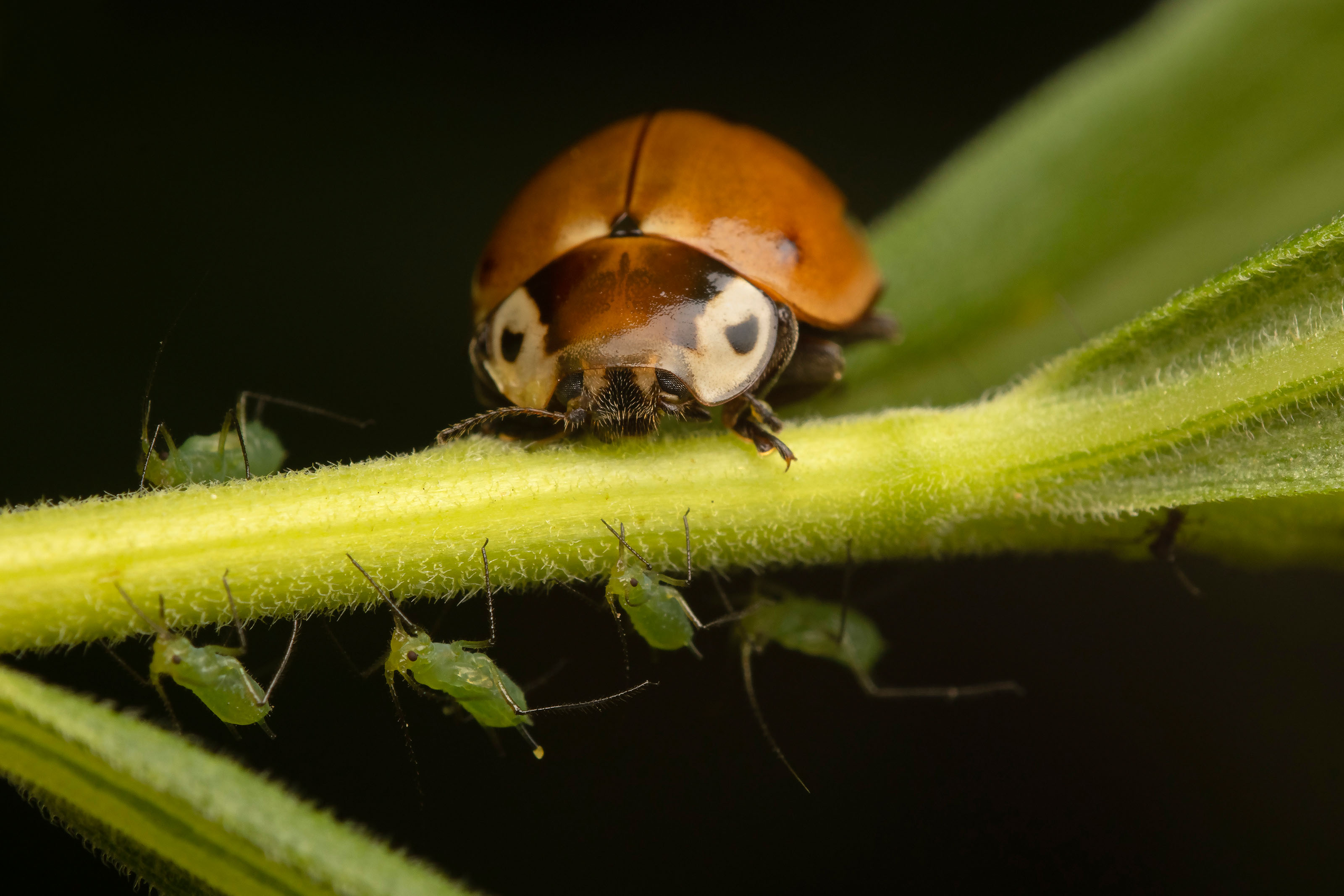
6. Reduce or Eliminate Pesticides
Pass on the pesticides and create a balance of predator-prey relationships in the garden.
It might be hard to believe, but homeowners apply more pesticides per acre in their home landscapes than farmers apply to crops. Homeowners use pesticides for a variety of reasons, some of which are necessary. Preventing termites from causing structural damage to our homes, for example, is an important use of pesticides. However, disrupting food chains to avoid a few holes in the leaves of ornamental plants is not the best use of chemical control.
Having a few holes in leaves is perfectly natural and should be celebrated. Instead of relying on pesticides, adopt an integrated pest management (IPM) approach to pest management, which includes using a mix of manual, mechanical, cultural and chemical (only when absolutely necessary) methods for taking care of pesky weeds or insects.
Ultimately, the goal with a healthy wildlife garden is to create a balance of predator-prey relationships. Lady beetles, green lacewing larvae, assassin bugs, robber flies, wasps and ambush bugs are among the many insect predators that will help keep pesky plant pests in check.
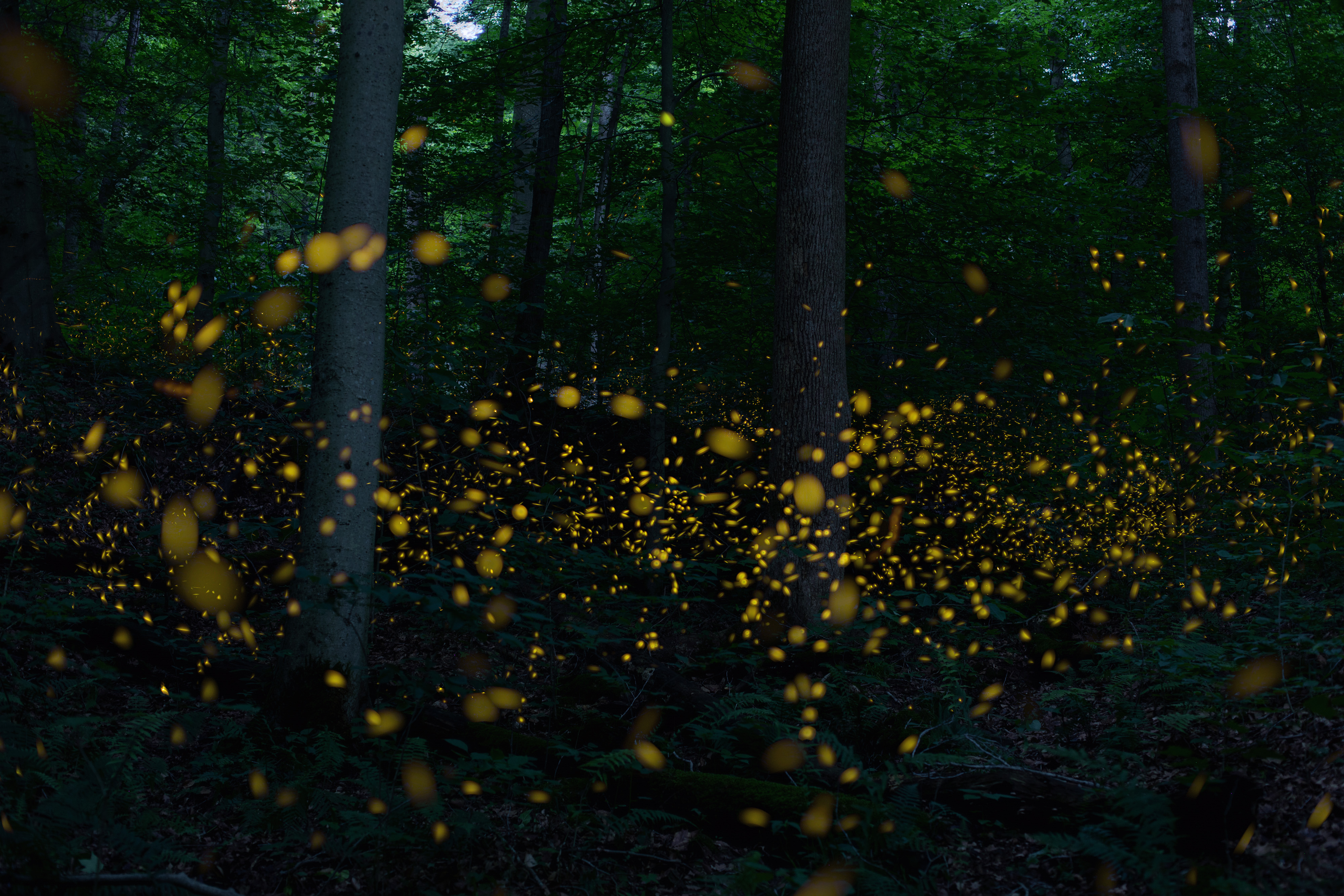
7. Turn Down the Lights
Reducing light pollution will help safeguard nocturnal insects like fireflies and moths.
Light pollution is the presence of artificial light in the night sky. Eighty percent of the world lives under light-polluted skies, and recent research has highlighted the increasing importance of this excess light in the decline of insects. Light pollution can negatively impact nocturnal insects, like fireflies that use bioluminescence to attract a mate. Unfortunately, fireflies aren’t the only insects affected by nuisance nighttime light. Lights can attract and disorient moths, mayflies and aquatic insects. It's also a contributing factor for many bird fatalities. During spring and fall bird migrations in particular, light in the night sky can attract birds into cities and towns where they are at increased risk of building strikes.
Gardeners can help curb light pollution by using motion-sensor security lights and ensuring that outdoor lights are turned off overnight. For lights that must remain on, replace cool-toned bulbs with warm-colored bulbs, which reduce glare and are less attractive to insects. Pulling the curtains or shades in your home can also prevent your indoor light from leaking outdoors during evening hours.
Where possible, advocate for communities and businesses to take a similar approach of turning off lights when not in use. Not only will this help our nighttime wildlife, but it will help save electricity and reduce carbon emissions as well!
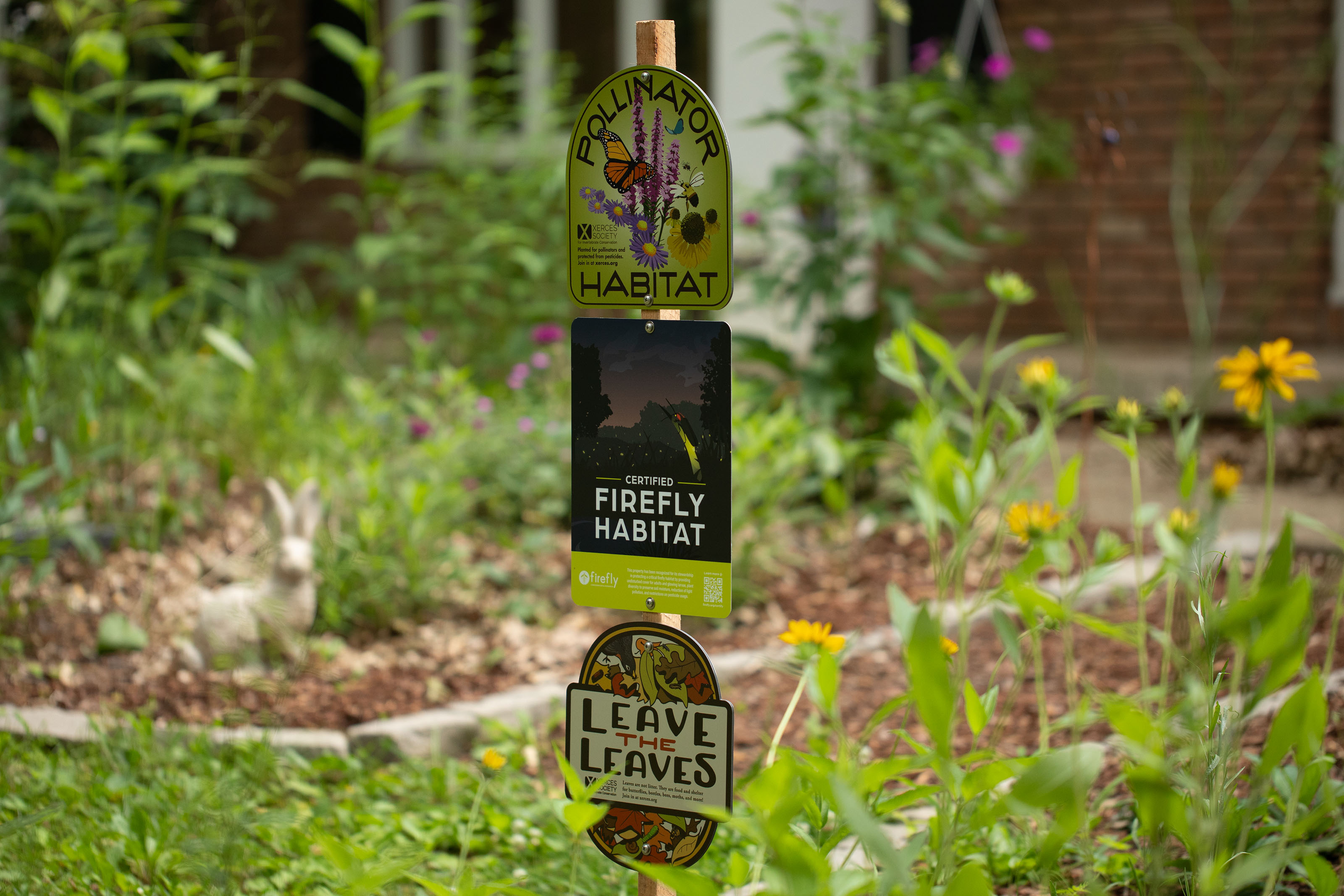
8. Certify Your Garden for Wildlife
Take pride in your efforts to support insects by certifying your garden for wildlife.
Thoughtful garden design can create ecologically vibrant gardens that align with neighborhood expectations and community standards. Start by ensuring your native plant and pollinator gardens have appropriate borders. Bricks, stones or natural wood borders can help maintain tidy edges and provide a more traditional garden aesthetic. Signage can also be helpful for educating nit-picky neighbors and curious community members about your garden intentions.
Here are some resources on getting your landscape certified to show your commitment to wildlife:
- Certified Wildlife Habitat (National Wildlife Federation)
- Monarch Waystation (Monarch Watch)
- Certified Firefly Habitat (Firefly Conservation and Research)
- Pollinator Habitat and Leave the Leaves signs (Xerces Society)
If your neighborhood still isn’t convinced, good old-fashioned conversation may help alleviate any neighborly concerns. Talk to neighbors about how your redesigned landscape reduces emissions, provides habitat and food for nesting and migratory birds and supports healthy and vibrant food webs. It’s hard to argue with the fact that these bug-friendly gardening practices help us all!
